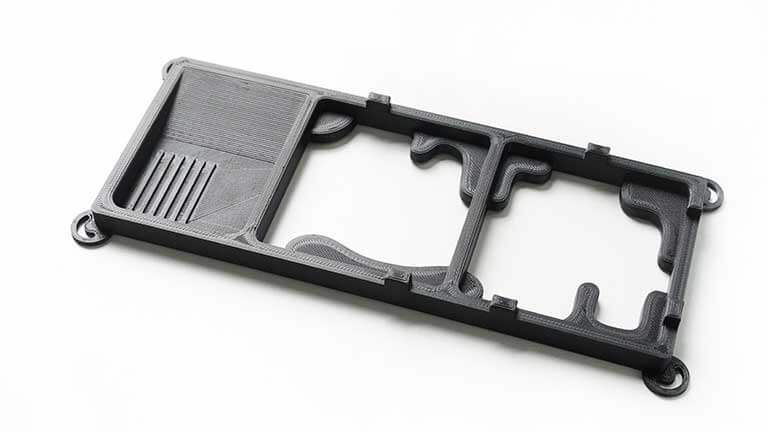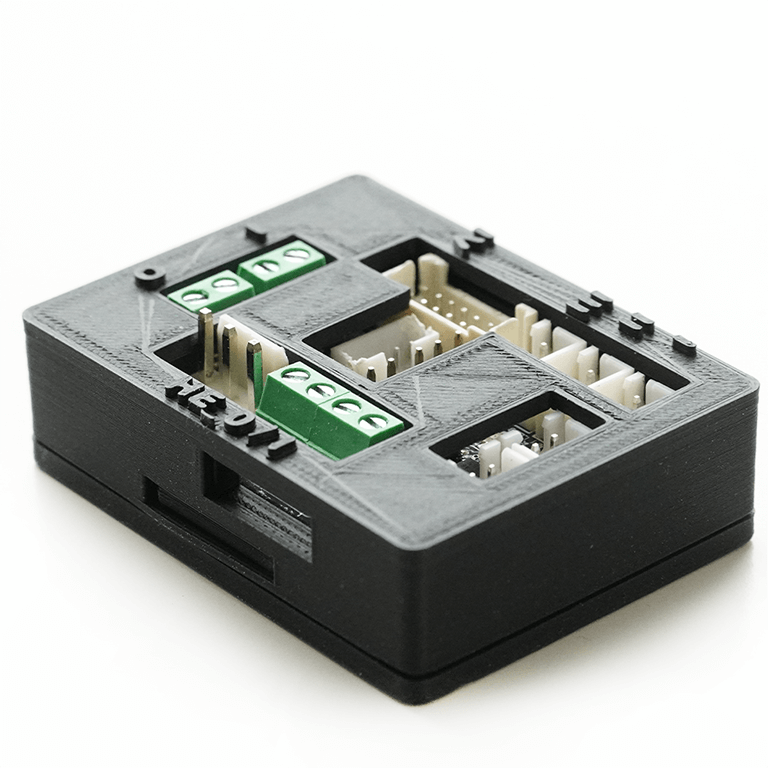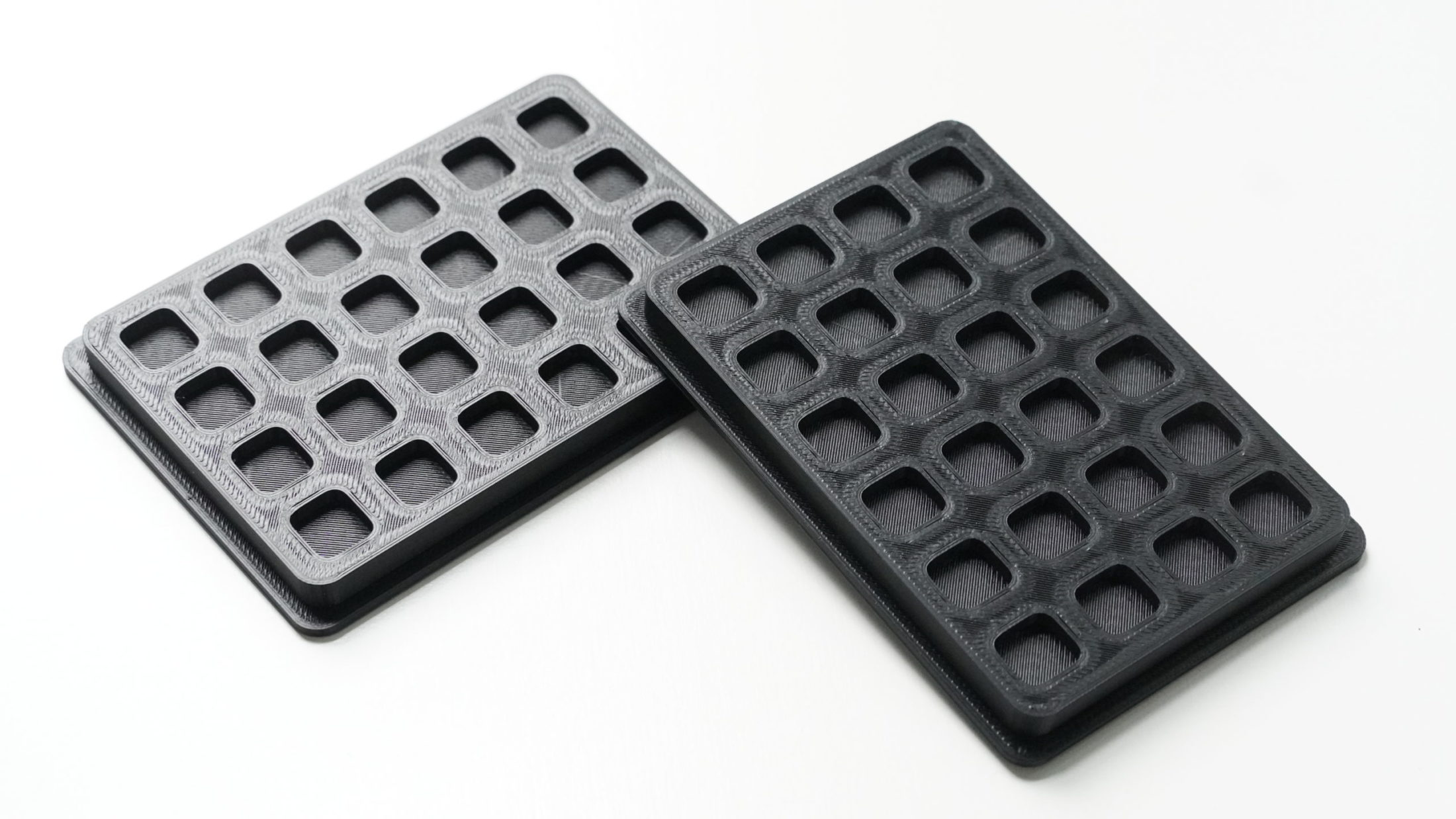ESD safe 3D printing materials
Reduce the risk of damage from ESD with special filaments
In this article, we will explain how ESD occurs, in which application areas it causes problems, and how our ESD-safe 3D printing filaments help solve them.
What is ESD?
ESD stands for "electrostatic discharge". This occurs when there is a sudden charge equalization between two objects with different voltage potentials and can cause significant damage, especially to electronic components, but also in numerous other areas.

What causes ESD?
In general, every body has positive and negative charge, which is balanced in the normal state. An electrically charged object, on the other hand, has an imbalance of charges. This is created by either transferring charge to the object or taking charge away from it, e.g. by movement or friction. If a body with a different charge potential then approaches the charged object, a sudden exchange of charge takes place.
For humans, an electrostatic discharge is noticeable from about 3,000 volts and is colloquially referred to as an "electric shock". Although this is unpleasant, it does not pose a danger to us. However, the situation is different in factories or laboratories. Even the slightest charge imbalance in the production or manufacturing process can cause damage to parts, resulting in costly repairs or delays.
ESD safe materials
To prevent such hazards and damage, it is important to dissipate the charges slowly, for which ESD-safe materials can be used. This is because it is not the strength of the current that is problematic, but the abrupt charge equalization. Even though ESD-safe materials are not true electrical conductors, electrons can flow across their surface. If the materials are grounded, the electric charge can flow across their surface to a grounded point without causing any damage. Grounded ESD-safe materials are also antistatic, meaning small particles such as dust or powder will not stick to them.

Fields of application for ESD-safe materials
One of the main fields of application for ESD-safe materials is the electronics and semiconductor industry. There, even a charge equalization of 10 volts or more can cause considerable damage to electronic parts. Sensitivity to ESD is also steadily increasing in this area as parts become smaller and smaller, leaving less space for the installation of protective charges.
In addition, since electrostatic discharge can generate sparks, which in turn can cause explosions, it is important to use ESD-safe materials in other areas for safety reasons. For example, in all explosive or flammable environments, such as at gas pumps.
ESD-safe materials are also necessary when conveying powdered materials in order to prevent disruptive static charges.

ESD safe materials for 3D printing
ESD-safe 3D printing materials are produced by combining an optimized base material with a conductive filler. Thereby the base material is responsible for the properties of the finished part. When choosing the right material for your application, you should therefore pay attention to the requirements you have for your part.
The filler serves to establish the electrical conductivity of the base material in the range specified for ESD materials. This filler is often graphite or carbon black, which is inexpensive. In conventional materials developed for injection molding or machining, the filler content is often between 15% and 25%. For 3D printable ESD-safe materials derived from these injection molding formulations and not optimized for 3D printing, this can cause problems as it greatly alters the material. The high carbon content, for example, can cause the materials to be more fragile and suffer from severe wear.
Carbon nanotubes (CNTs) offer an alternative to prevent this. These can also be used as fillers and have a significantly lower influence on the properties of the base material. They are characterized by the fact that their high aspect ratio (ratio of length to diameter) allows them to form an electrically conductive network in a polymer matrix at very low stress. In addition, carbon nanotubes are very good conductors of electricity, allowing a wide range of conductivity values to be realized. As with the choice of base material, it is also worth weighing up the respective advantages and disadvantages for the filler material depending on the application.
Our selection of ESD-safe filaments with CNT filler
Depending on your requirements and application, we currently offer you a choice of three different ESD-safe filaments for the FDM process: ESD ABS, ESD PLA and ESD PETG.
In all three materials, thin multi-walled carbon nanotubes were used as fillers to achieve uniform conductivity. According to the manufacturer, a target area resistance of 107 up to 109 ohms/sq can be achieved with all three. The materials mentioned are suitable for applications requiring protection against electrostatic discharges, such as electrical housings, connectors and components. Depending on the base, each material also brings additional properties.
ABS, for example, is characterized by high stability under impact and elongation, as well as thermal stability up to 95°C. However, the material is very brittle, especially with thin walls.
PLA, which is derived from renewable sources (e.g. corn starch), provides high tensile strength as well as surface hardness and stiffness. However, it can only be used to a limited extent for applications with thermal input.
PETG plastic combines the best properties from ABS and PLA. It is tougher than ABS, more heat resistant than PLA, UV stable and resistant to many chemicals.
Further detailed information on the materials can be found in the respective manufacturer's data sheet: ESD ABS, ESD PLA, ESD PETG
If you have any further questions about ESD-safe 3D printing materials or would like to have components printed from ESD-safe filaments, please feel free to contact us directly. We are happy to help you reduce the risk of damage from electrostatic discharge.